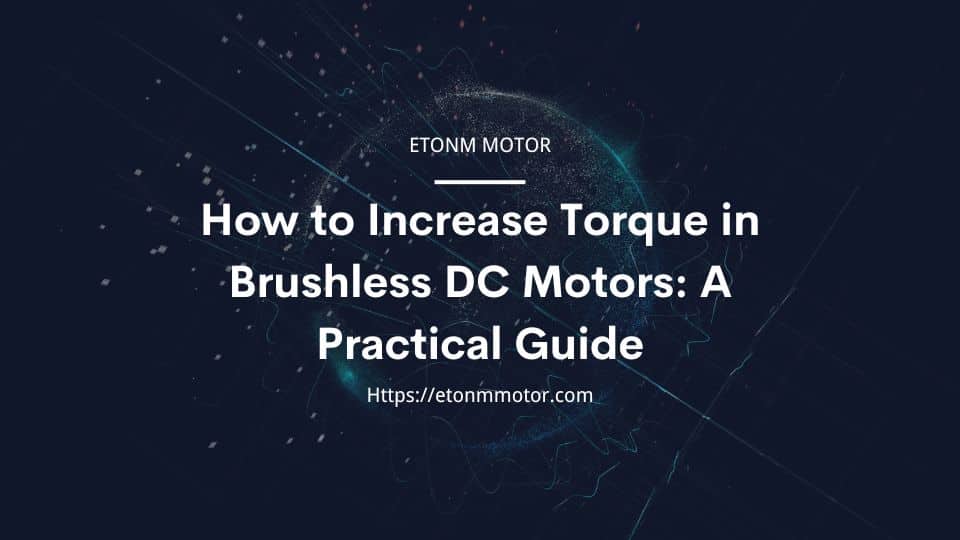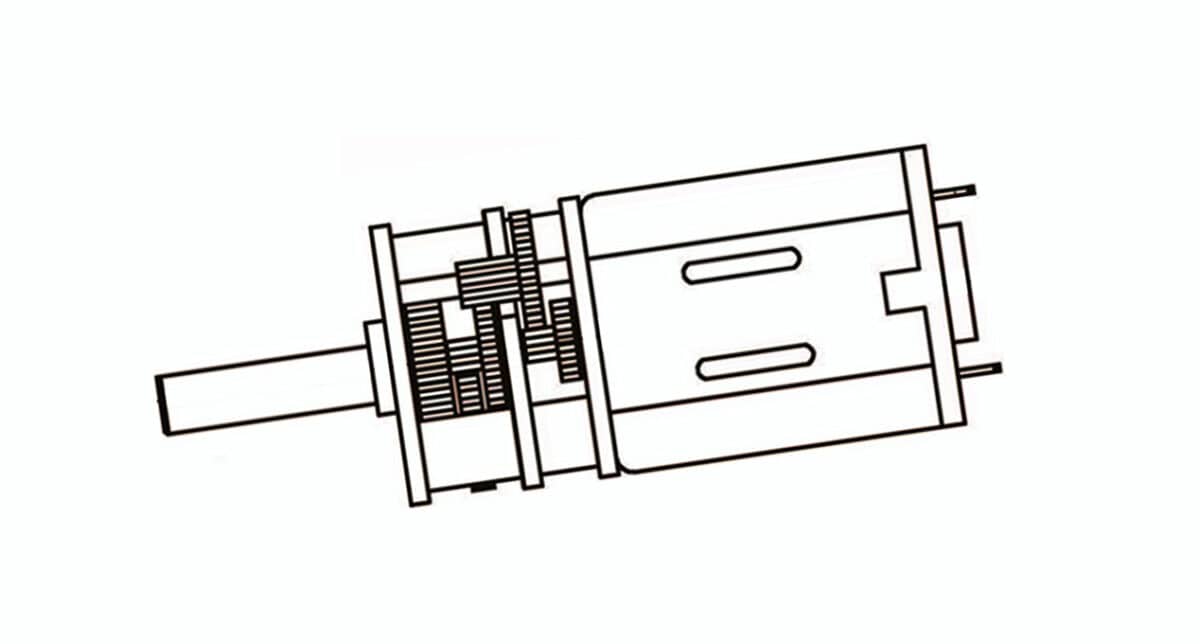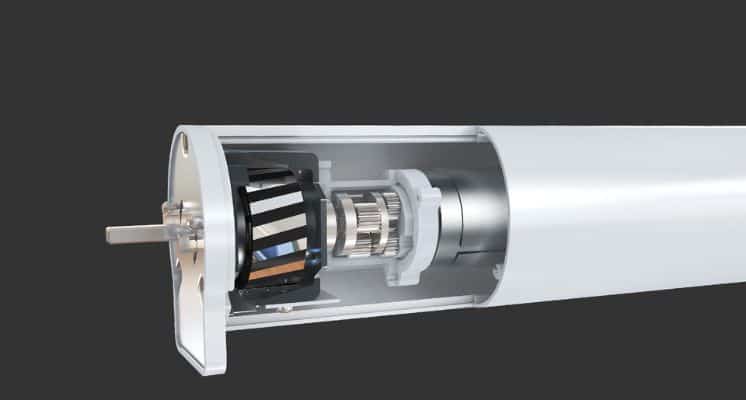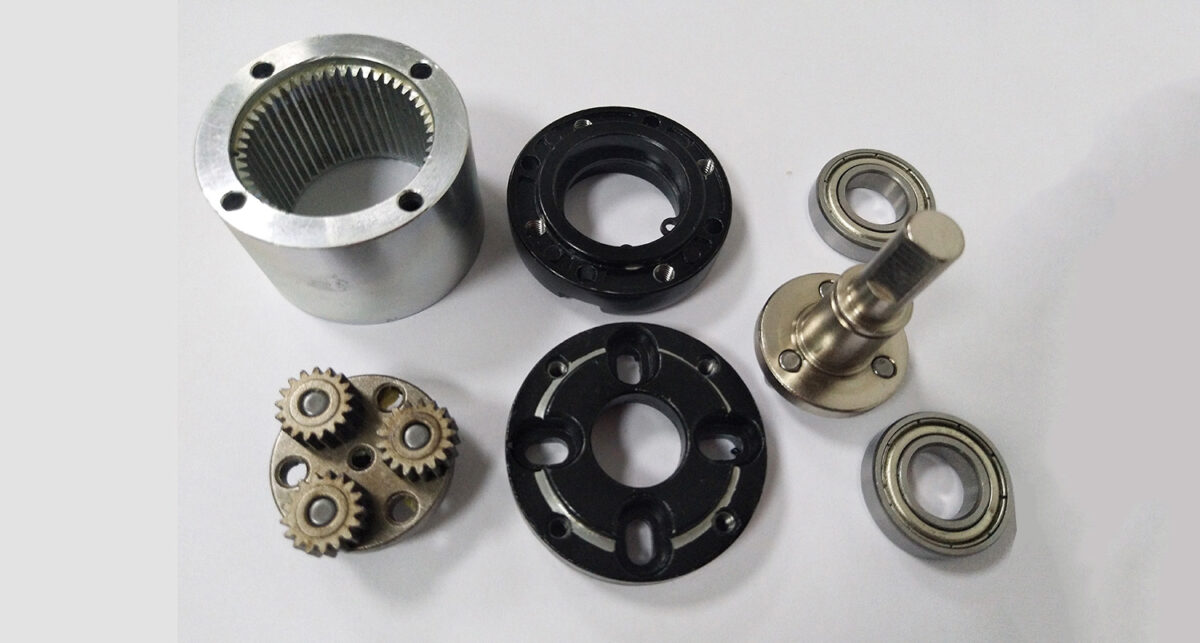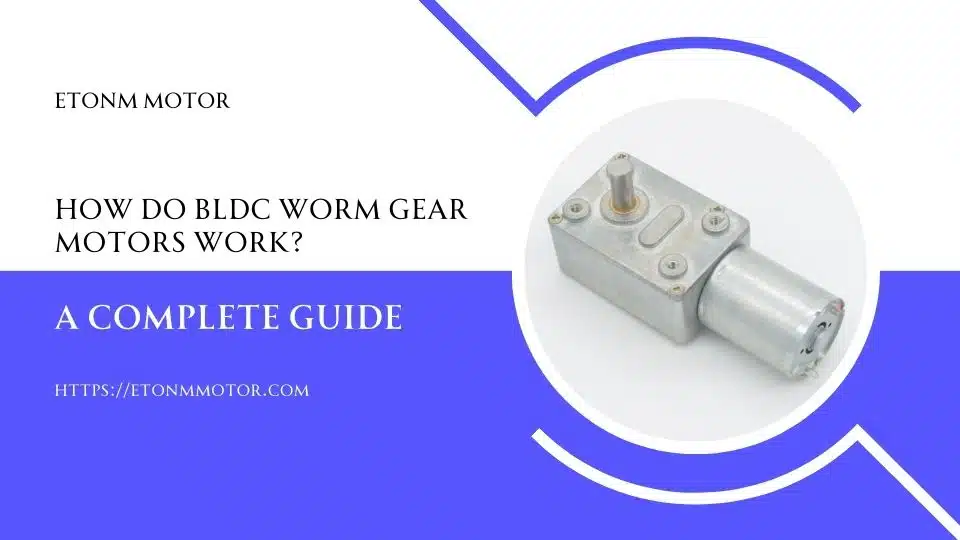Learn how to boost torque in Brushless DC Motors (BLDC) with practical tips, design tweaks, and real-world applications. Perfect for engineers and hobbyists alike!
Table of Contents
Introduction
Brushless DC Motors (BLDC) are the unsung heroes behind many modern technologies, powering everything from smart home devices to advanced robotics. Their efficiency, reliability, and compact design make them a top choice for industries like medical care, electric valves, and vending machines. But when it comes to applications requiring heavy lifting or precise control, one question often arises: How can you increase the torque of a Brushless DC Motor?
Torque is the lifeblood of motor performance, determining how effectively a motor can perform tasks like turning a robotic arm or operating an electric valve. Whether you’re an engineer designing a new system or a hobbyist tinkering with a project, understanding how to boost torque in a BLDC motor can make all the difference. In this guide, we’ll explore practical tips, design tweaks, and real-world applications to help you get the most out of your Brushless DC Motor. Let’s dive in!
What is Torque in a Brushless Motor?
Torque is the rotational force produced by a motor, essentially its ability to do work. In simpler terms, it’s what allows a motor to spin a robotic arm, lift a heavy object in a vending machine, or control the precise movement of an electric valve. For Brushless DC Motors (BLDC), torque is a critical performance metric because it directly impacts how well the motor can handle demanding tasks.
Unlike traditional brushed motors, BLDC motors rely on electronic commutation and permanent magnets to generate motion. This design makes them more efficient and durable, but it also means that optimizing torque requires a deeper understanding of factors like motor design, power supply, and magnetic field strength. Whether you’re working on a high-torque robotics project or a precision-driven medical device, knowing how to maximize torque can take your application to the next level.
Factors Affecting Torque in BLDC Motors
Several key factors influence the torque output of a Brushless DC Motor. Understanding these can help you identify the best ways to boost performance:
Motor Design: The physical construction of the motor, including the number of windings, pole count, and rotor size, plays a significant role in torque generation. For example, motors with more poles tend to produce higher torque at lower speeds.
Power Supply: The voltage and current supplied to the motor directly affect its torque output. Increasing voltage can boost torque, but it’s essential to stay within the motor’s rated limits to avoid damage.
Winding Configuration: The way the motor’s coils are wound can impact its torque characteristics. Motors with thicker wire and fewer turns generally produce higher torque.
Magnetic Field Strength: The strength of the magnets used in the rotor is another critical factor. High-quality neodymium magnets, for instance, can significantly enhance torque by creating a stronger magnetic field.
By addressing these factors, you can unlock the full potential of your Brushless DC Motor and ensure it delivers the torque needed for your specific application. In the next section, we’ll dive into practical strategies to increase torque and optimize motor performance.
Optimize Motor Design for Higher Torque
When it comes to increasing torque in a Brushless DC Motor (BLDC), the design of the motor itself is a great place to start. Small tweaks to the motor’s internal structure can lead to significant improvements in performance.
For instance, increasing the number of windings in the stator can enhance torque output. However, this often comes at the cost of reduced speed, so it’s essential to strike the right balance for your application. Similarly, adjusting the pole count—the number of magnetic poles in the rotor—can influence torque. Motors with more poles typically generate higher torque at lower speeds, making them ideal for applications like robotics or electric valves where precision and power are critical.
Another design consideration is the rotor’s size and shape. A larger rotor diameter can increase torque by providing more leverage, while optimizing the air gap between the rotor and stator can improve magnetic efficiency. By carefully tailoring these design elements, you can create a BLDC motor that delivers the torque you need without compromising other performance metrics.
Upgrade Power Supply and Voltage
One of the simplest ways to boost torque in a Brushless DC Motor is to increase the voltage supplied to it. Torque is directly proportional to the current flowing through the motor, and higher voltage allows for greater current delivery.
However, it’s crucial to stay within the motor’s rated voltage limits to avoid overheating or damaging the components. If your application requires a significant torque boost, consider upgrading to a power supply that can deliver higher voltage while maintaining stability. Additionally, using a high-quality electronic speed controller (ESC) can help regulate power delivery and ensure consistent performance.
Keep in mind that increasing voltage may also lead to higher energy consumption, so it’s important to evaluate the trade-offs based on your specific needs. For example, in battery-powered devices like portable medical equipment, optimizing power efficiency might be just as important as maximizing torque.
Use High-Quality Magnets and Materials
The strength of the magnets used in a BLDC motor plays a crucial role in determining its torque output. High-quality neodymium magnets, for instance, generate a stronger magnetic field, which translates to higher torque.
In addition to upgrading the magnets, consider the materials used in the motor’s core. Laminated steel cores are commonly used to reduce energy losses caused by eddy currents, ensuring that more of the input power is converted into useful torque. By investing in premium materials, you can enhance the motor’s efficiency and torque without making drastic design changes.
Implement Advanced Control Techniques
Modern Brushless DC Motors can benefit significantly from advanced control techniques like Field-Oriented Control (FOC). FOC is a method of controlling the motor’s stator currents to optimize torque production, especially at low speeds.
This technique works by aligning the magnetic fields of the rotor and stator, ensuring that the motor operates at peak efficiency. FOC not only increases torque but also reduces vibrations and noise, making it an excellent choice for applications like robotics and medical devices where precision is paramount.
If you’re working on a project that requires both high torque and smooth operation, consider integrating a controller that supports FOC. Many off-the-shelf solutions are available, making it easier than ever to implement this advanced technique in your design.
By combining these practical strategies—optimizing motor design, upgrading power supply, using high-quality materials, and implementing advanced control techniques—you can significantly increase the torque output of your Brushless DC Motor. In the next section, we’ll explore real-world applications where high-torque BLDC motors are making a difference.
Where High-Torque BLDC Motors Shine
High-torque Brushless DC Motors (BLDC) are indispensable in a wide range of industries, thanks to their ability to deliver powerful and precise performance. Let’s take a closer look at some real-world applications where these motors are making a significant impact.
- Robotics:
In robotics, torque is critical for tasks that require strength and precision, such as lifting heavy objects or performing delicate assembly work. High-torque BLDC motors are commonly used in robotic arms, automated guided vehicles (AGVs), and collaborative robots (cobots). Their ability to provide consistent power at low speeds ensures smooth and accurate movements, even under heavy loads. - Electric Valves and Meters:
Electric valves and flow meters often require precise control to regulate fluid or gas flow. High-torque BLDC motors excel in these applications because they can generate the necessary force to operate valves reliably, even in high-pressure environments. This makes them ideal for use in industrial automation, HVAC systems, and water treatment plants. - Vending Machines:
Vending machines rely on motors to lift and dispense products, which can range from lightweight snacks to heavy beverages. High-torque BLDC motors provide the strength needed to handle these tasks efficiently, ensuring smooth operation and reducing the risk of jams or malfunctions. - Medical Care:
In the medical field, precision and reliability are paramount. High-torque BLDC motors are used in devices like surgical robots, infusion pumps, and imaging equipment. Their ability to deliver consistent torque ensures accurate performance, which is crucial for patient safety and effective treatment. - Smart Home Devices:
From automated window blinds to smart locks, high-torque BLDC motors are increasingly being used in smart home applications. These motors provide the power needed to operate mechanisms smoothly and quietly, enhancing user convenience and comfort.
By understanding these applications, you can see how high-torque BLDC motors are driving innovation across industries. Whether you’re designing a cutting-edge robotic system or a reliable electric valve, choosing the right motor can make all the difference.
If you’re looking for custom BLDC motor solutions tailored to your specific needs, explore Etonm Motor’s Brushless DC Motor offerings for high-performance options designed to deliver exceptional torque and reliability.
Pitfalls When Trying to Increase Torque
While increasing torque in a Brushless DC Motor (BLDC) can significantly enhance performance, there are several common mistakes that can lead to suboptimal results or even damage the motor. Here are some key pitfalls to watch out for:
- Overloading the Motor:
One of the most frequent mistakes is pushing the motor beyond its rated limits. While increasing voltage or current can boost torque, exceeding the motor’s specifications can cause overheating, reduce lifespan, or even lead to permanent damage. Always ensure that any modifications stay within the manufacturer’s recommended parameters. - Neglecting Thermal Management:
Higher torque often means higher heat generation. If the motor isn’t properly cooled, excessive heat can degrade components like magnets and windings, leading to performance issues or failure. Make sure to incorporate effective cooling solutions, such as heat sinks or fans, especially in high-torque applications. - Using Incompatible Components:
Upgrading a BLDC motor for higher torque often requires compatible components, such as a robust electronic speed controller (ESC) or a power supply that can handle increased demands. Using mismatched or low-quality components can result in inefficient operation or even damage to the motor. - Ignoring Efficiency Trade-Offs:
Increasing torque often comes at the cost of reduced efficiency or higher energy consumption. For example, adding more windings to boost torque may also increase resistance, leading to greater power losses. It’s important to evaluate these trade-offs and choose a solution that balances torque with overall system efficiency. - Overlooking Mechanical Constraints:
High-torque motors can place additional stress on mechanical components like gears, shafts, and bearings. If these parts aren’t designed to handle the increased load, they may wear out quickly or fail unexpectedly. Always ensure that the entire system is capable of supporting the higher torque output.
By avoiding these common mistakes, you can safely and effectively increase the torque of your Brushless DC Motor while maintaining reliability and performance.
Conclusion
Increasing the torque of a Brushless DC Motor (BLDC) is a powerful way to enhance its performance, whether you’re working on robotics, electric valves, or smart home devices. By optimizing motor design, upgrading power supplies, using high-quality materials, and implementing advanced control techniques like Field-Oriented Control (FOC), you can unlock the full potential of your BLDC motor.
However, it’s equally important to avoid common pitfalls such as overloading the motor, neglecting thermal management, or using incompatible components. Balancing torque improvements with efficiency and reliability ensures that your motor performs optimally in real-world applications.
At Etonm Motor, we specialize in providing custom BLDC motor solutions tailored to your specific needs. Whether you’re designing a high-torque robotic arm or a precision-driven medical device, our expertise can help you achieve the performance you’re looking for.
Ready to take your project to the next level? Explore our Brushless DC Motor solutions or contact us today to discuss your requirements.
Related Reading
- Why Choose 24v Small DC Motors?
- Introduction of 12V DC Micro Motor Products
- How to Choose the Right BLDC Motor for Robotics Applications
- Top 5 Applications of Brushless DC Motors in Industrial Automation
- Brushless DC Motors in Medical Devices: The Ultimate Guide to BLDC Motor Applications
- Why BLDC Motors Are the Future of Electric Vehicles: A Complete Guide
- What Factors Affect the Performance of Brushless Motors? A Comprehensive Guide
- How to Choose the Right Brushless Motor for Your Drone: A Complete Guide
- How to Choose the Right Brushless Gear Motor for Your Application
- Brushless DC Motors: Key Uses in Smart Home, Medical & Robotics
- Power Up Precision: High-Speed Brushless DC Motors for Screwdrivers
- 12V DC Motor High Torque Low RPM Performance
- High Torque 12V DC Motor 2000 RPM | Custom 8mm Shaft Motors

